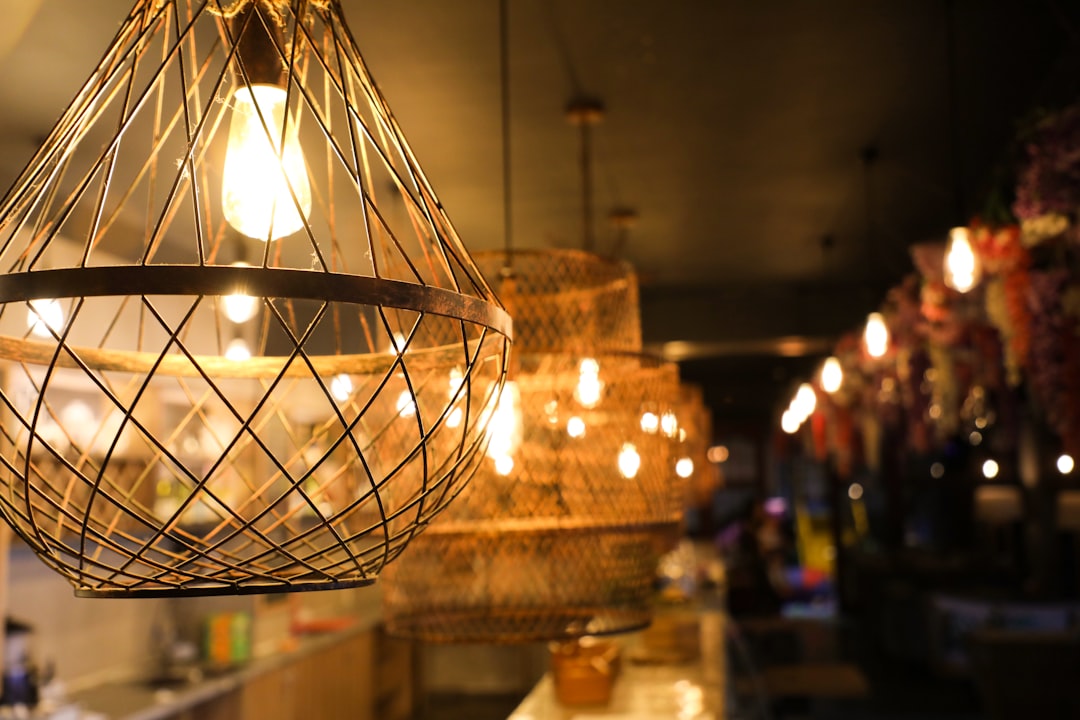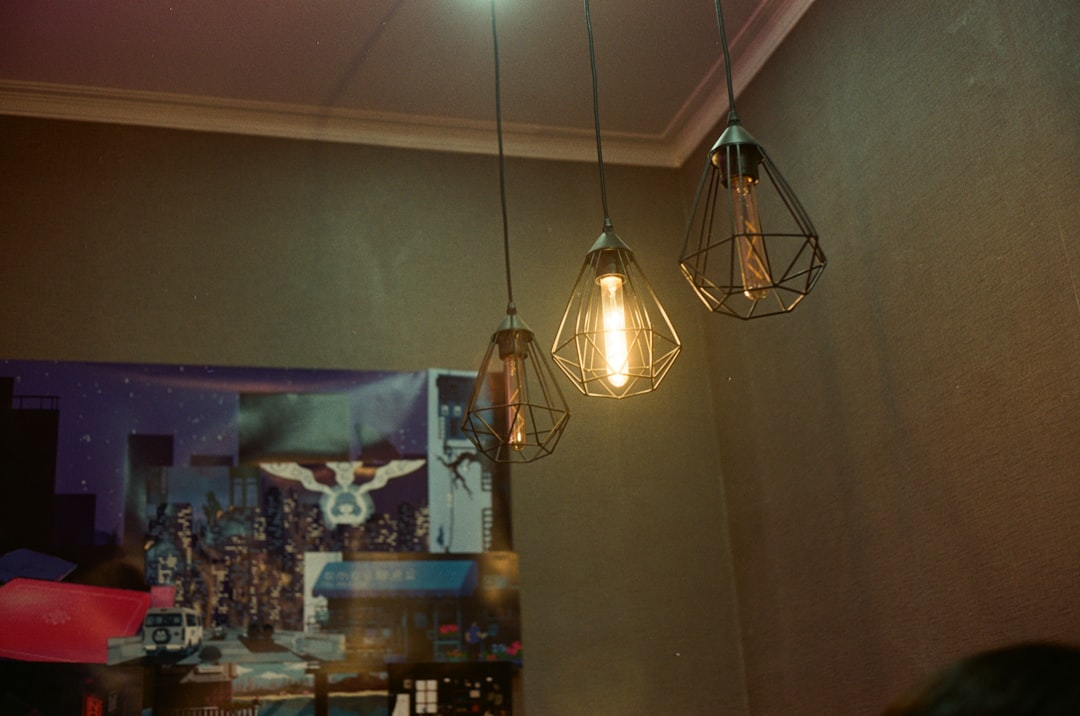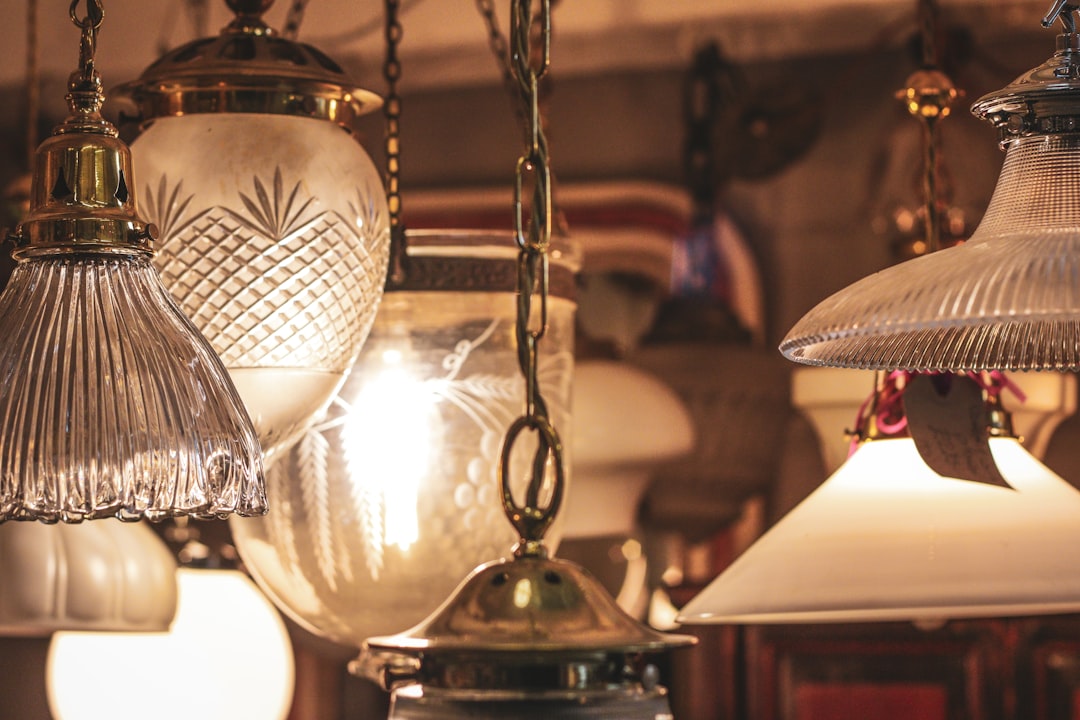

Engage prospects with a scan and streamline customer engagement with FREE QR code marketing tools by Sona – no strings attached!
Create a Free QR CodeFree consultation

No commitment

Engage prospects with a scan and streamline customer engagement with FREE QR code marketing tools by Sona – no strings attached!
Create a Free QR CodeFree consultation

No commitment
QR codes have evolved from a novelty to a strategic powerhouse in bridging offline engagement with online action. For lamp repair shops, QR codes represent a frictionless and highly effective way to connect customers seeking lamp repair services to the resources, offers, and expertise that set your business apart, all without an app or complicated setup.
Whether you run a local shop or manage a multi-location repair business, integrating QR codes across business touchpoints can significantly boost appointment bookings, customer inquiries, and service reviews. Many lamp repair shops lose high-value prospects simply because these leads never make it into their systems, often remaining anonymous or untracked after a single visit or flyer interaction. See Sona account ID for best practices.
This guide explores how lamp repair shops can deploy QR codes to modernize workflows, provide instant access to lamp repair services, and deliver measurable results that drive growth. See Sona QR’s use case library for examples. Discover how every lamp, flyer, or receipt can become a digital entry point for customer engagement, streamlining operations for maximum ROI and minimizing lost opportunities caused by disconnected customer journeys or incomplete data.

Lamp repair shops frequently struggle to move interested prospects from physical touchpoints like printed ads or in-store conversations into a system they can nurture. A customer might pick up a brochure or chat with a technician, then leave without booking, reviewing, or joining a follow-up list. QR codes bridge this gap by converting those fleeting moments into trackable digital actions that capture intent and create a direct path to the next step.
The shift is straightforward. Replace analog processes like paper intake forms, manual service estimates, and generic business cards with QR codes that route people to purpose-built pages and forms like Google Forms QR. By doing so, you remove friction, reduce data entry errors, and keep every signal of interest in one trackable workflow. The result is more completed appointments, fewer lost leads, and a higher percentage of satisfied customers who return.
By incrementally weaving QR codes into the customer journey, you consolidate data, build richer profiles, and enable smarter segmentation. Even when prospects stay anonymous at first scan, you can still measure interest, learn which placements perform best, and re-engage via Sona retargeting that turns casual curiosity into booked jobs.
Lamp repair businesses sit at the intersection of physical objects and personal service, which makes offline-to-online handoffs both frequent and fragile. Someone notices a cracked socket, sees your storefront, or receives a mailer with your services, yet the moment passes before they take action. QR codes eliminate that gap by making the next step one scan away and by turning every printed asset into a measurable, actionable touchpoint. See QR adoption by industry.
The practical benefits are significant for owners and managers who need to streamline operations and prove the value of their marketing. QR codes reduce friction for customers, capture previously lost interest signals, and give your team the data to refine messaging, offers, and placements. Instead of hoping someone types a URL later, you invite them to act now while interest is highest.
By closing these gaps and adding transparency to both customer behavior and marketing performance, lamp repair shops increase bookings, improve retention, and recover opportunities that used to disappear between the counter and the web.

QR codes come in several formats that map neatly to the needs of a lamp repair business. Choosing the right format for each context ensures customers get exactly what they expect and your team gets the data required for continuous improvement. As a rule of thumb, use static codes for evergreen resources that rarely change and use dynamic codes for campaigns, offers, and pages that you expect to update or track closely.
Two practical examples illustrate the difference. A static QR on a laminated bench sign that links to your lamp care PDF is perfect because the document changes infrequently. A dynamic QR on a postcard that offers “10 percent off restoration this month” is better because you can swap out the promotion later without reprinting cards, while also capturing scan analytics by channel and neighborhood.
With a platform like Sona QR, you can generate all formats and manage them centrally. Over time, you will learn which formats work best for your customer base and where dynamic codes deliver the most value.

Growth often hides in the everyday assets of a lamp repair shop. Counter signs, workbench tags, window displays, and direct mailers all attract attention yet frequently stop short of conversion. QR codes turn those surfaces into entry points that drive appointments, reviews, and repeat business, while also producing data you can use to refine your marketing strategy.
Think of your physical footprint like a map of potential funnels. Customers enter at the door or glance at your window, wait at the counter, examine their invoice, and leave with a restored lamp. At each stop, a QR code can extend the relationship by capturing intent, clarifying next steps, and prompting actions such as booking, reviewing, or registering a warranty.
When you differentiate codes across these placements, the scan data reveals which channels perform best for your shop. You can then double down on the highest-yield locations, optimize the rest, and maintain consistent messaging across physical and digital touchpoints.

QR codes are most powerful when they are mapped to real customer interactions. In lamp repair shops, a few well-chosen use cases can transform common pain points into growth catalysts. The goal is to ensure that every prospect or customer knows exactly what to do next, while your team captures the data needed for effective follow-up.
Below are three proven use cases that align with the typical lamp repair journey: discovery, consideration, and post-service engagement. Implement them with clear calls to action, concise destinations, and dynamic tracking for iterative improvement.
With these three use cases in place, you can layer additional codes for reviews, warranty registration, and seasonal promotions. Each scan captures intent and context, which supports better segmentation and more timely outreach.
Every QR scan is a micro-conversion that tells you something about interest and intent. By deploying multiple codes across your shop and marketing, you can build segmented audiences tied to behavior. These segments make it straightforward to tailor offers, messages, and timing, which increases relevance and avoids the pitfalls of generic follow-ups.
For lamp repair shops, the most useful distinctions are usually about service type, engagement location, and lifecycle stage. A person who scanned a flyer for “lamp troubleshooting” is not the same as a loyal customer scanning a receipt for “repair tracking.” Treating them differently pays off in both conversions and customer satisfaction.
This approach turns anonymous interest into structured data and makes your follow-ups timely and useful. Over time, it improves conversion rates and reduces unsubscribes or opt-outs that often result from broad, mismatched campaigns.
QR codes act as the connective tissue between your physical operations and your digital marketing. They let you unify the customer journey so that what happens on the counter, in the window, or at a local flea market translates into measurable results in your CRM. More importantly, they help you adapt in real time as you learn which messages resonate and which placements deliver the best return.
For lamp repair shops, a connected QR strategy spans print collateral, social content, local ads, and events. Each code can carry context about the channel and call to action, which makes attribution and optimization far easier than relying on vanity URLs or memory. The outcome is a coordinated funnel that moves people from awareness to booking with minimal friction.
When all codes are managed in one platform like Sona QR, you can monitor performance across channels and sync scan data with your CRM and ad platforms. This simplifies both campaign management and reporting, ensuring a consistent experience for customers and clear metrics for your team.
A well-planned QR rollout aligns your use cases, code types, and placements with business outcomes. In lamp repair shops, that usually means more booked appointments, stronger restoration pipelines, and better retention through maintenance education. Treat this section like a blueprint you can adapt to your shop’s scale and priorities.
Before you start generating codes, choose a platform that allows dynamic editing, analytics, and integrations with tools like HubSpot or Salesforce. Start creating QR codes for free. That way, you build on a foundation that will scale as your campaigns grow and your segmentation becomes more sophisticated.
Start with one or two goals that map cleanly to your customer journey and revenue model. Common use cases include appointment booking for repairs, restoration quote requests, warranty registration at pickup, or event RSVP for in-store workshops.
Choose static or dynamic based on how often the destination will change and how critical tracking is for that campaign. Most growth-focused campaigns should use dynamic codes for flexibility and analytics.
Design influences scan rates. A QR code that blends into the background or lacks a clear instruction will underperform. Make it visible, on brand, and unmistakable about what happens after the scan.
Roll out codes where customers already look and act. Spread placements across awareness, consideration, and conversion moments so no step in the journey is left to chance.
Measurement is where QR campaigns pay off. Monitoring scan behavior allows you to attribute outcomes to channels, improve creative, and automate follow-ups that close gaps.

Many lamp repair shops invest in print and events without tying scan events back to business results. Knowing that a code was scanned is helpful, yet it is not enough to optimize spend or staffing. The key is to connect scans with outcomes like form submissions, calls, appointments, and revenue, then visualize how each channel contributes over time.
A platform approach solves this. Sona QR captures scan-level data such as time, device, and location, while Sona.com links those interactions to buyer journeys and revenue attribution. This gives owners and marketers a clear view of which placements drive pipeline and which need adjustment.
When scan analytics and attribution are part of your operating rhythm, you can manage QR codes like any other performance channel. That reduces wasted spend, improves forecasting, and creates a tighter feedback loop between marketing and service delivery.
The most successful lamp repair shops treat every physical surface as an opportunity to capture interest and guide the next step. Yet the difference between a curiosity and a conversion often comes down to clarity, context, and timing. Use these practices to maximize scan rates and ROI.
Focus on the placements and tools your team uses most. If invoices and counter cards are your main assets, standardize QR design and calls to action for those surfaces. If events are central to your pipeline, create event-specific codes and follow-up sequences that fire automatically after each scan.
QR codes work best when the value is obvious at a glance. Pair every code with a simple, benefit-focused CTA, keep the landing experience fast and mobile-friendly, and remove unnecessary fields from forms to minimize friction.
QR codes are a strategic lever for lamp repair shops that want to bridge traditional expertise with a modern, data-driven customer journey. By embedding QR codes at each stage of the process, from first contact to post-repair care, you invite customers to act in the moment and give your team the insights to guide that journey more effectively. The result is a smoother path to booking, clearer attribution, and less guesswork across your marketing and operations.
Here is what a mature QR program delivers for lamp repair shops:
Equipped with a platform like Sona QR for generation, management, and tracking, and Sona.com for identity resolution and attribution, your shop can make QR codes a core part of performance marketing. Start with one use case such as booking from your storefront, expand to restoration galleries and care guides, then unify all scan data in your CRM. Within weeks, you will see which assets carry their weight, which messages resonate, and how to turn everyday interactions into measurable, sustainable growth.
QR codes have transformed lamp repair shops from traditional service providers into tech-savvy customer engagement hubs. Whether it’s streamlining appointment bookings, providing instant access to troubleshooting guides, or enabling seamless warranty registrations, QR codes replace outdated processes with quick, mobile-friendly actions that enhance customer convenience and satisfaction. Imagine customers scanning a code on their lamps to instantly access repair histories or schedule service without waiting on hold.
With Sona QR, lamp repair shops can create dynamic, trackable QR codes in seconds, update service information instantly without reprinting materials, and connect every scan directly to customer insights and revenue growth. No more missed opportunities—just smarter, more efficient operations that boost customer loyalty and drive repeat business.
Start for free with Sona QR today and turn every scan into a loyal customer, a streamlined service, or your next successful repair appointment.
You can find reputable lamp repair shops by looking for businesses that provide clear contact information, positive customer reviews, and use tools like QR codes to offer easy access to booking, service details, and customer feedback.
Common services include lamp repair and restoration, vintage lamp restoration, lamp maintenance tips, warranty registration, and providing care guides for cleaning and safety.
Repair costs vary, but lamp repair shops can offer online cost estimators accessible through QR codes to provide customers with accurate and up-to-date pricing information.
Signs include cracked sockets, faulty wiring, damaged cords, or malfunctioning switches, which customers often notice when visiting a lamp repair shop or seeing promotional materials.
Start by defining your services and target customers, use QR code technology to streamline bookings and customer engagement, deploy codes across marketing materials, track results with analytics, and integrate data into a CRM for continuous optimization.
Use Sona QR's trackable codes to improve customer acquisition and engagement today.
Create Your FREE Trackable QR Code in SecondsJoin results-focused teams combining Sona Platform automation with advanced Google Ads strategies to scale lead generation

Connect your existing CRM

Free Account Enrichment

No setup fees
No commitment required

Free consultation

Get a custom Google Ads roadmap for your business






Launch campaigns that generate qualified leads in 30 days or less.
